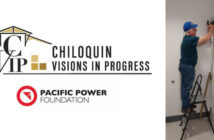In recent months, the topic of power has been making front-page news in publications like The Bulletin and the Portland Business Journal. Over the same period, EDCO has been facilitating discussions between stakeholders and hosting key regional utility providers at its board meetings, including Pacific Power, Bonneville Power Administration (BPA), Mid-State Electric Co-Op, and Central Electric Co-Op. These dialogues have shed light on the critical supply and demand challenges that power providers are facing.
Today’s society has an incredible appetite for power consumption, but also generally acknowledges their role in being good stewards of the environment. These contradictions are converging at an exceptionally rapid pace, leaving power transmission (providers) and generation companies (producers) caught in the middle. Something will have to give because many Central Oregon communities, like others around the country, are reaching the limits of their respective power capacity. In addition, if you couple the rapidly increasing demand for power with the fact that utilities are becoming the insurer of last resort during catastrophic wildfires, utilities are finding it increasingly challenging to remain profitable.
Recently, in BlackRock’s Annual Chairman’s Letter to investors, CEO Larry Fink introduced the term “energy pragmatism” as an approach that emphasizes the practical aspects of energy production and consumption and recognizes the need for balance between advancing renewable energy technologies and maintaining reliable and affordable energy sources. This concept acknowledges that while the transition to cleaner energy sources is necessary, fossil fuels still play a crucial role in meeting current energy demands due to their availability and established infrastructure.
The U.S. Energy Information Administration has highlighted a significant decline in hydropower generation in the Northwest, marking a 22-year low in the period between October 2022 and September 2023. Overall, hydropower generation across the West saw an 11% decrease from the previous year and projections for 2024 suggest another 12% decrease, potentially setting new historic lows. In the Northwest, where the Columbia River Basin’s hydropower dams supply 60% of the electricity and account for 90% of the region’s renewable energy, this is particularly concerning¹.
Meanwhile, the Pacific Northwest Utilities Conference Committee anticipates a 25% rise in regional electricity demand over the next decade². This expectation aligns with the regional trends EDCO and local utility providers are observing, where the demand for electricity is escalating rapidly. On a national level, the Federal Energy Regulatory Commission forecasts a nationwide electricity demand increase of 4.7% over the next five years, a significant jump from the 2.6% growth estimated in 2022³. This surge is driven by substantial investments in sectors with high energy needs, such as semiconductor manufacturing, industrial facilities and data centers. While it may be easy to blame historically large power users like data centers, the increased appetite is also being driven by the digital and mobile lifestyles of today’s consumers that requires more power to charge devices, heat and cool homes, run data, and charge electric vehicles. Additionally, artificial intelligence is further exacerbating the consumption of power and is slated to double the need for data center infrastructure in the U.S. over the next five to ten years. Across the country, leaders are looking at infrastructure needs to reinforce the grid and increase capacity for renewable energy solutions.
To address the local demand for power, utilities are investing billions of dollars in upgrades. The Bonneville Power Administration has initiated over $2 billion worth of projects to enhance Oregon grid capacity, including a new substation near Prineville and a 53-mile power line to La Pine, which are essential for accommodating regional growth and integrating new, clean energy resources. Pacific Power has already invested in more than 20 local infrastructure projects, increasing capacity in Central Oregon and has plans to invest more than $400 million in local infrastructure over the next ten years. Additionally, they have plans to invest nearly $1.5 billion in a new 180-mile transmission line that will serve the region. Local member-owned cooperatives are also investing resources. Central Electric Co-Op has committed approximately $100 million to infrastructure improvements in Central Oregon, and Mid-State Electric Co-Op has earmarked $51 million for developments in South Deschutes County.
As the complexities of the regional energy landscape grow, EDCO sees the value in the approach of “energy pragmatism.” Civic leaders, regulatory bodies, investors, and utilities will need to work together to make well-informed decisions that effectively balance risk and opportunity, fostering a realistic pathway towards long-term goals. While efforts are underway to move towards more sustainable grid technology and more energy-efficient buildings, homes and appliances, more time is needed to create affordable solutions and infrastructure.
The EDCO team remains dedicated to keeping stakeholders informed and engaged as these complex issues are navigated and supporting policies that mitigate regulatory burdens and enhance affordability.
Source:





